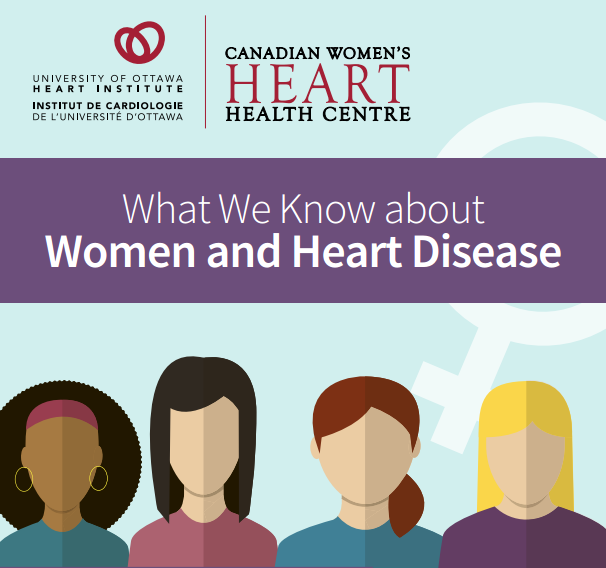The terms “sex” and “gender” are often used interchangeably despite clear and distinct definitions.
- Sex refers to biological constructs that are primarily associated with physical and physiological features, including hormones, genes, anatomy, and physiology, and is typically categorized as female or male.
- Gender refers to socially constructed roles, behaviours, expressions, and identities, and, in comparison, is typically categorized as woman/girl or man/boy.
Heart disease used to be considered a "man's disease", but no longer. While heart disease is on the decline among men, it is rising among women.
Heart disease is the number one killer of women over 35 worldwide, accounting for more deaths every year than all cancers combined.1
Risk for Women
- After menopause, the risk for CVD increases to almost the same level as that of men, because of declining estrogen levels.
- Heart disease is the leading cause of death for women worldwide. (2)
- Women have different sex-specific risk factors including pregnancy, hormone-related conditions and menopause.
- Traditional risk factors such as diabetes, smoking, high blood pressure and family history all have a greater impact on women than men. (3)
- Overall, women are more likely to die following a heart attack than men. (4)
For more information, view our infographic to better understand "What we know about women and heart disease".
Symptoms
Both men and women experience the most common symptoms of a heart attack, but women may feel or respond to these symptoms differently. Women tend to put off seeking treatment because they are less likely to believe they’re having a heart attack.
Common heart attack symptoms include:
- Chest pain (including chest pressure, squeezing, fullness or pain, burning, or heaviness)
- Discomfort or pain in the neck, jaw, shoulder, arms, or back
- Shortness of breath
- Sweating
- Nausea
- Light-headedness
It’s important to take note of any other signs or symptoms that may be associated with a heart attack. Some people experience less common symptoms. For example, women will experience less definite symptoms, such as chest discomfort rather than chest pain.
In some cases, chest pain may not be the first sign of heart trouble. In others, some people, particularly women, report feeling fewer familiar symptoms up to a month or so before a heart attack occurs.
Less common heart attack symptoms include:
- Unusual tiredness
- Sleep trouble
- Problems breathing
- Indigestion
- Anxiety
Diagnostic testing, warning signs, and symptoms may be felt differently by women. Please visit the Canadian Women’s Heart Health Centre for more information and available programs and resources specific to women’s heart health.


